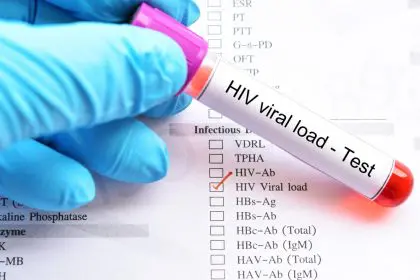Uterine cancer stands poised to become one of America’s most pressing women’s health challenges, with Black women bearing a disproportionate burden that threatens to worsen dramatically in coming decades. A comprehensive analysis from the American Association for Cancer Research reveals troubling patterns that demand immediate attention from healthcare systems and communities nationwide.
The growing health crisis
As the most common gynecological cancer in the United States, uterine cancer primarily affects the lining of the uterus and can lead to devastating consequences when detection comes too late. The disease typically strikes women in their 50s and 60s, often during years when they serve as family caregivers and community pillars.
New projections paint a stark picture of healthcare inequality. While overall cancer rates continue climbing, Black women face a significantly steeper increase in new cases compared to their white counterparts. This disparity represents more than statistics—it reflects lives disrupted and a healthcare system struggling to protect its most vulnerable populations.
Understanding the root causes
Multiple interconnected factors drive these troubling disparities, creating a complex web of challenges that require comprehensive solutions. Healthcare access barriers form the foundation for worse outcomes among Black women, with systemic inequities manifesting in delayed appointments, inadequate insurance coverage and geographic isolation from quality medical facilities.
Diagnostic delays compound the problem significantly. Many Black women experience dismissal of their symptoms by healthcare providers, leading to postponed screenings and missed opportunities for early intervention. This pattern proves particularly devastating with gynecological cancers where timing determines survival rates.
Biological and social risk factors
The aging American population contributes to rising cancer rates across all demographics, but additional factors amplify risks specifically for Black women. Obesity serves as a significant risk factor for uterine cancer, with higher prevalence rates among Black women doubling cancer risk through hormonal mechanisms that promote tumor development.
Changing surgical patterns also influence cancer rates. Fewer women now undergo hysterectomies for benign conditions like fibroids and endometriosis—procedures that previously eliminated uterine cancer risk. While preserving reproductive organs benefits many women, this trend requires enhanced surveillance protocols to catch cancers early.
Recognizing critical warning signs
Uterine cancer often announces itself through abnormal bleeding patterns, particularly in postmenopausal women. Heavy menstrual periods, bleeding between cycles, or any vaginal bleeding after menopause warrants immediate medical evaluation. Additional warning signs include pelvic pain, unexplained weight loss, and changes in urination patterns.
Unfortunately, these symptoms frequently mirror benign conditions, creating diagnostic confusion that delays appropriate treatment. Healthcare providers must maintain high suspicion levels, particularly when treating women who face elevated baseline risks.
Community response and support
Grassroots organizations across the country are stepping forward to bridge gaps in cancer education and prevention. Local health centers now offer specialized workshops addressing gynecological health concerns, while support networks provide emotional and practical assistance to affected families.
These community-driven initiatives prove essential because they understand cultural contexts and communication styles that resonate with their target populations. They create safe spaces where women can discuss intimate health concerns without fear of judgment.
Healthcare system solutions
Addressing uterine cancer disparities requires systemic changes extending beyond individual healthcare encounters. Improved access to preventive screenings, enhanced provider training on cultural competency, and strengthened community health center funding all play crucial roles in reducing these gaps.
Technology offers promising solutions through telemedicine platforms that connect women in underserved areas with specialists, while mobile screening units bring preventive services directly to communities lacking adequate healthcare infrastructure.
Moving forward
The projected surge in uterine cancer cases among Black women represents both a crisis and an opportunity. By acknowledging these disparities now, healthcare systems can implement targeted interventions before the situation worsens further.
Success requires coordinated efforts spanning medical studies, community engagement, policy reform and individual advocacy. The time for action is now—before projections become lived realities for thousands of American families.

















